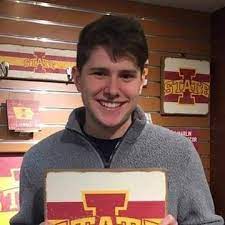Project Overview
Semester 1 Summary
The primary directive of our team was to model a quantum computer featuring our client's novel hardware-approach for scalability in ion-trap computing. The long-term intention of this project is to create a kilo-qubit machine with all-to-all connectivity, which could conceivably achieve a Quantum Volume which is orders of magnitude above current designs. This metric is a common but surprisingly complex indicator of quantum computing capability and reliability. If successful, this design could make mid-scale quantum computation feasible. Due to the complexity of the domain of our directive, we subdivided into six areas of knowledge acquisition and internal dissemenation during the first semester:
- Qubit characteristics and implementations
- Quantum error correction and correcting codes
- Quantum noise reduction techniques
- Machine learning for quantum system control and validation
- Quantum circuit design
- Hardware integration
Semester 2 Summary
While semester 1 was mostly a broad-level research phase, we began to hone in on our design during semester 2. During this phase, we identified two major areas of design interest that our team could address:
- Hardware
- Identifying and addressing electro-physical concerns associated the client's hardware paradigm regardless of implementation details
- Designing a viable layout for a functional board implementing our client's hardware paradigm
- Assessing fabrication feasibility of the proposed design
- Software
- Designing a model for quantum algorithm execution under the client's hardware paradigm
- Developing a generalizable compiler/scheduler to prepare and execute algorithms on any hardware designed utilizing the client's hardware paradigm
- Attempt to address concerns of fidelity (error correction, coherence and noise) during execution under the model of hardware execution we designed
Unfortunately, the complexity of our project and its domain, along with some difficulty in solidifying client expectations, resulted in both our hardware and software team members primarily focussing on the first two of their three outlined concerns.
Team Members
Jacob Frieden
S1 Expertise: ML For Quantum ComputingSoftware Team: Researcher

SE Major - Pursuing graduate studies
Arvid Gustafson
S1 Expertise: Noise ReductionSoftware Team: Development Lead

SE Major - Entering a software development career
Sam Degnan
S1 Expertise: Error CorrectionSoftware Team: Communications and Documentation

SE Major - Entering a software development career
Nicholas Greenwood
S1 Expertise: QubitsHardware Team SoA Expert

CprE Major - Entering a career in finance
Colin (Chad) Gorgen
S1 Expertise: Quantum CircuitsHardware Team: Modeling Lead

EE Major - Pursuing graduate studies
Emile Albert
S1 Expertise: Hardware IntegrationHardware Team: Circuit Electronics

EE Major - Pursuing graduate studies